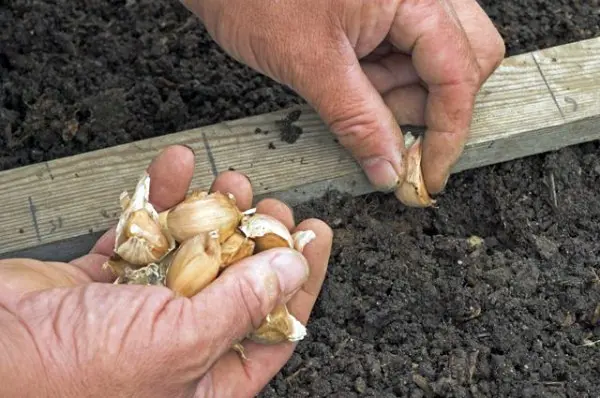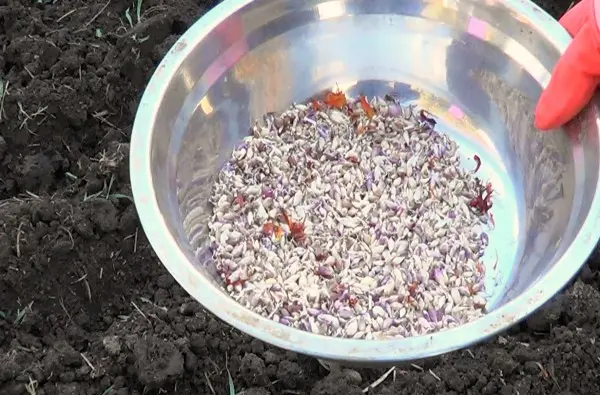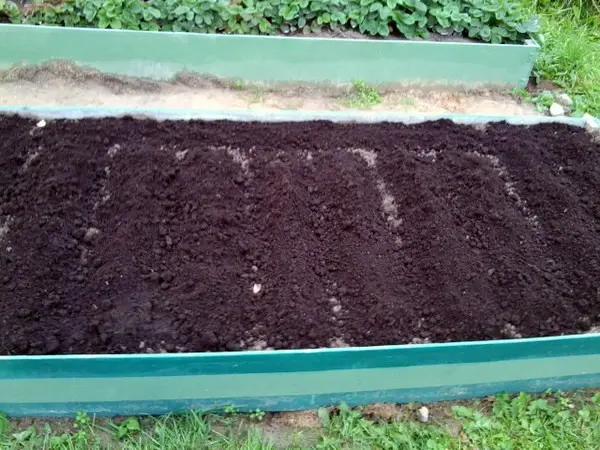Contents
Growing any crop requires a basic knowledge of what kind of weather prevails in the region, when to start planting for the winter, and therefore dig a fertilizer site. Growing garlic for the winter in the Moscow region, the subtleties and tricks of this process is the topic of this article.
Sowing dates for winter garlic
Habitual and popular culture in the kitchen of any housewife – garlic is of two types. One of them is winter, the one that is planted for the winter, the other is spring, for spring planting. If you decide to start growing winter varieties in the Moscow region, you should familiarize yourself with all the rules and terms for sowing a winter variety. It gives a much larger yield than spring, and ripens just in time for the period of rolling conservation for the winter.

Before planting, select the variety you are interested in. Winter garlic is represented by two main types: those that give arrows, and non-arrows.
Shooting species include:
- Gribovsky 80;
- Bashkirsky 85;
- Sail;
- Jubilee Gribovsky;
- Dungan local.
Non-shooting varieties:
- Novosibirsk;
- Broadleaf 220.
Regardless of the variety in the Moscow region, as in most other regions, garlic is planted for the winter 45-50 days before the first frost.

So when is it worth planting a crop in open ground? You can start growing as early as the end of August or choose the most successful dates according to the lunar calendar. This year the best days are at the end of September and beginning of October. It is not recommended to plant a vegetable in the open field on September 1 and 16, October 16, November 14 and 29. When planted at any other time, the plant will adapt to the soil, develop a root system, and therefore give a good harvest.
Selecting a landing site
Growing a vegetable requires careful selection of a place for planting a plant. If you want to plant a crop for the winter, you should choose a well-lit piece of land in which moisture will not accumulate and stagnate. Acidity in open ground should be low. Loamy soil is ideal.
In addition, choosing the right site, you need to remember the rules of crop rotation. When the same plant grows on the same soil for several consecutive seasons, substances that reduce yields accumulate in the soil, and useful soil elements are depleted.
It is best to plant garlic after cucumbers, tomatoes and zucchini. In this case, enough minerals and other useful substances accumulate in the earth for the proper growth and development of the crop.

Preparing the soil and garlic
Before planting a crop for the winter, it is worth preparing the land. In order for the plant to develop properly on open ground during cold weather, the soil should be properly fertilized. Both homemade mixtures and those bought in stores are suitable. When you prepare the mixture yourself, you should adhere to the basic recommended proportions: for one bucket of horse manure or mullein, you should take 1 tbsp. l. double superphosphate, 10 to 12 grams of nitrophoska (can be replaced with 15 grams of potassium salt) and a glass of slaked lime.
Growing a crop also requires digging up the soil. You need to dig to a depth of at least 20-25 centimeters. The root system develops quickly and grows to great depths. This means that nutrients must be distributed evenly throughout the depth.
When the soil is dug up and fertilized, the material itself should be well prepared for sowing. The teeth should be large, whole, without visible damage. It is necessary to remove the scales and the bottom of the garlic head from them so that the plant can take root.
Growing will be more efficient if the mother heads were collected in the Moscow region, that is, in the same region. This means that the plant will take root well in soil and similar conditions.

Rules of landing
You need to dig the soil for planting teeth up to 8 cm deep. The distance between each clove sown for the winter should be from 8 to 10 cm. In order for growing and harvesting to be as convenient as possible, and for each plant to have the right amount of nutrients, the crop should be planted in a checkerboard pattern, just as it is recommended to plant strawberries.
Remember that the correct planting depth affects how the plant survives the cold. If you dig the teeth too close to the surface, they will be damaged when the soil freezes.
Before the first frosts, the beds should be covered with polyethylene. However, as soon as the first snow falls, the film should be removed. Otherwise, the wintering of the teeth will be spoiled and the cultivation will be disturbed.
When the plant survived the winter and began to sprout, the earth should be loosened and fertilized. In this way, the plant will receive more air, which will noticeably improve cultivation. As a result, you will get large heads with large teeth.
Video “Planting winter garlic”
This video demonstrates the process of planting winter garlic.









